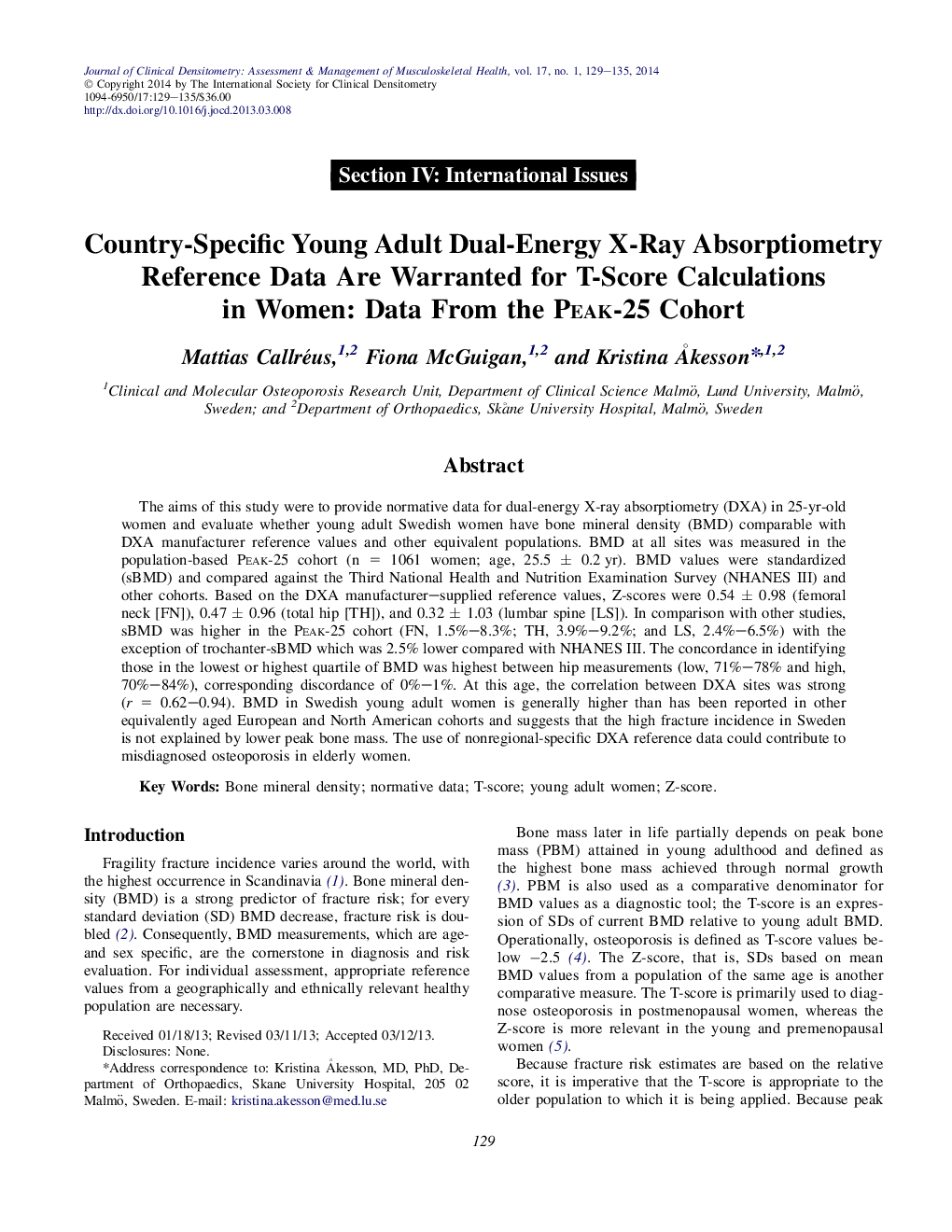| Article ID | Journal | Published Year | Pages | File Type |
|---|---|---|---|---|
| 10168087 | Journal of Clinical Densitometry | 2014 | 7 Pages |
Abstract
The aims of this study were to provide normative data for dual-energy X-ray absorptiometry (DXA) in 25-yr-old women and evaluate whether young adult Swedish women have bone mineral density (BMD) comparable with DXA manufacturer reference values and other equivalent populations. BMD at all sites was measured in the population-based Peak-25 cohort (n = 1061 women; age, 25.5 ± 0.2 yr). BMD values were standardized (sBMD) and compared against the Third National Health and Nutrition Examination Survey (NHANES III) and other cohorts. Based on the DXA manufacturer-supplied reference values, Z-scores were 0.54 ± 0.98 (femoral neck [FN]), 0.47 ± 0.96 (total hip [TH]), and 0.32 ± 1.03 (lumbar spine [LS]). In comparison with other studies, sBMD was higher in the Peak-25 cohort (FN, 1.5%-8.3%; TH, 3.9%-9.2%; and LS, 2.4%-6.5%) with the exception of trochanter-sBMD which was 2.5% lower compared with NHANES III. The concordance in identifying those in the lowest or highest quartile of BMD was highest between hip measurements (low, 71%-78% and high, 70%-84%), corresponding discordance of 0%-1%. At this age, the correlation between DXA sites was strong (r = 0.62-0.94). BMD in Swedish young adult women is generally higher than has been reported in other equivalently aged European and North American cohorts and suggests that the high fracture incidence in Sweden is not explained by lower peak bone mass. The use of nonregional-specific DXA reference data could contribute to misdiagnosed osteoporosis in elderly women.
Related Topics
Health Sciences
Medicine and Dentistry
Endocrinology, Diabetes and Metabolism
Authors
Mattias Callréus, Fiona McGuigan, Kristina Ã
kesson,
